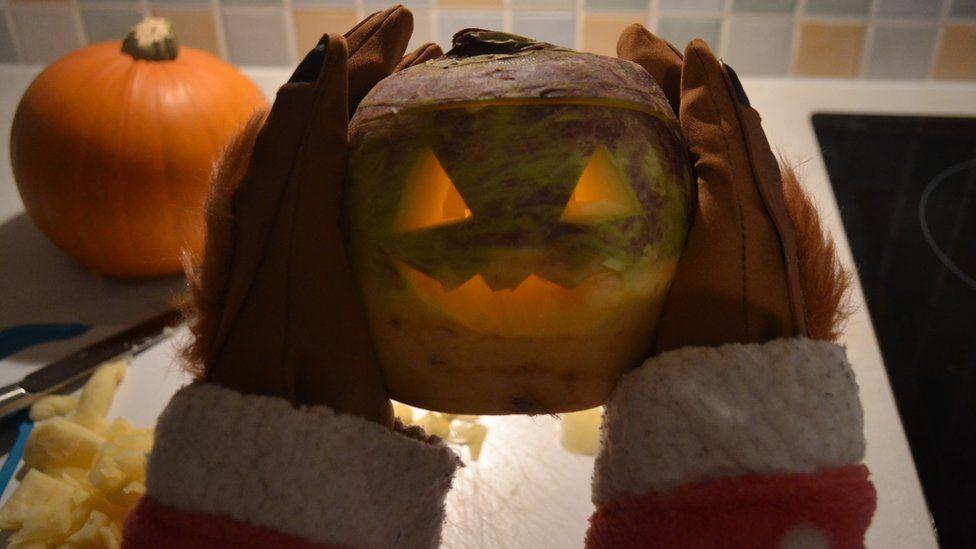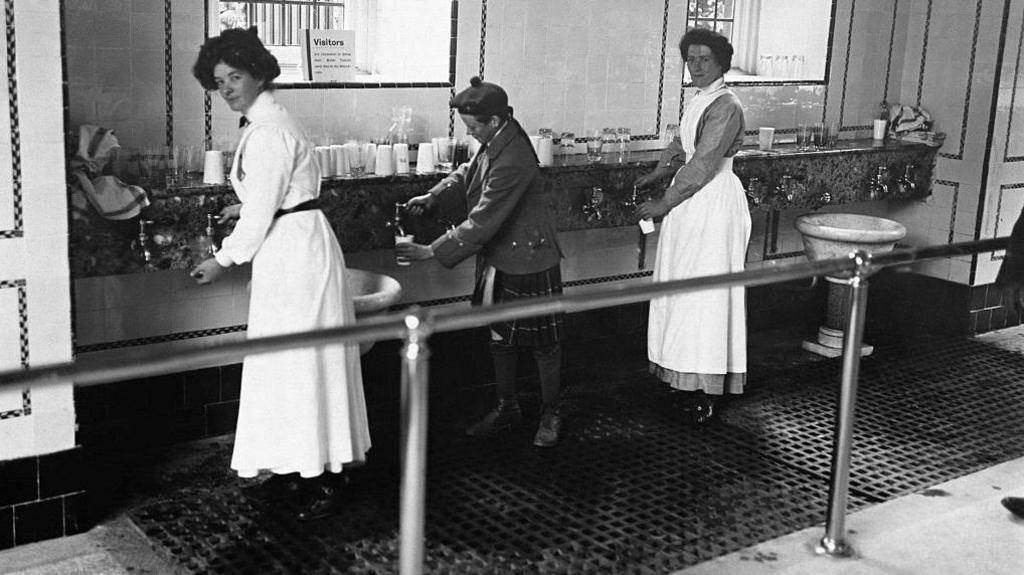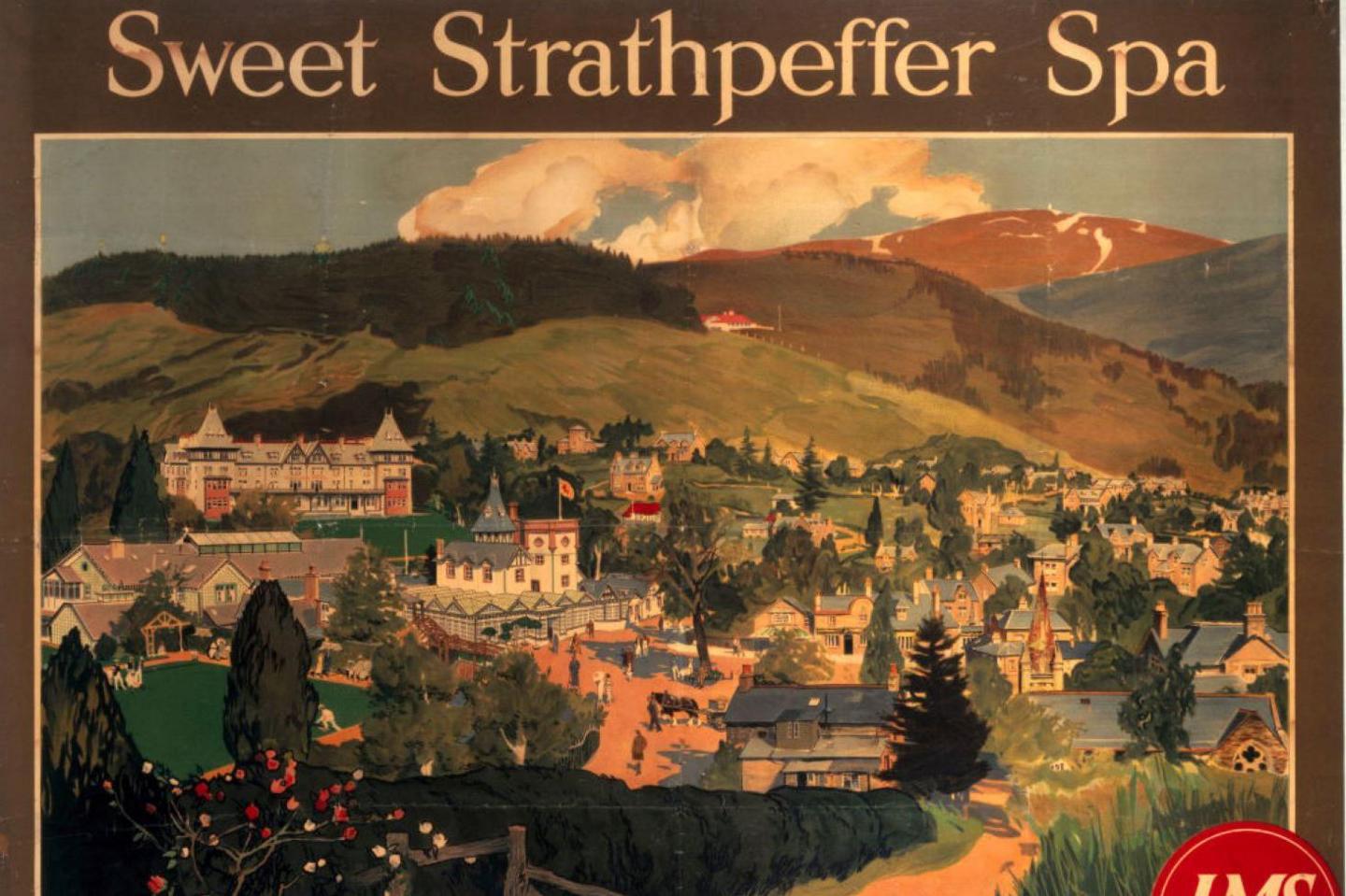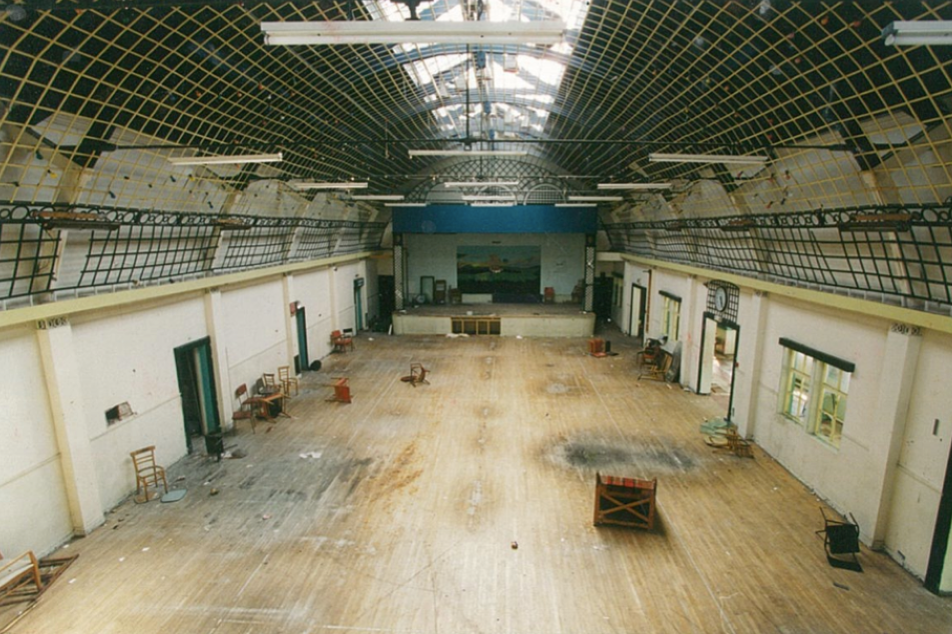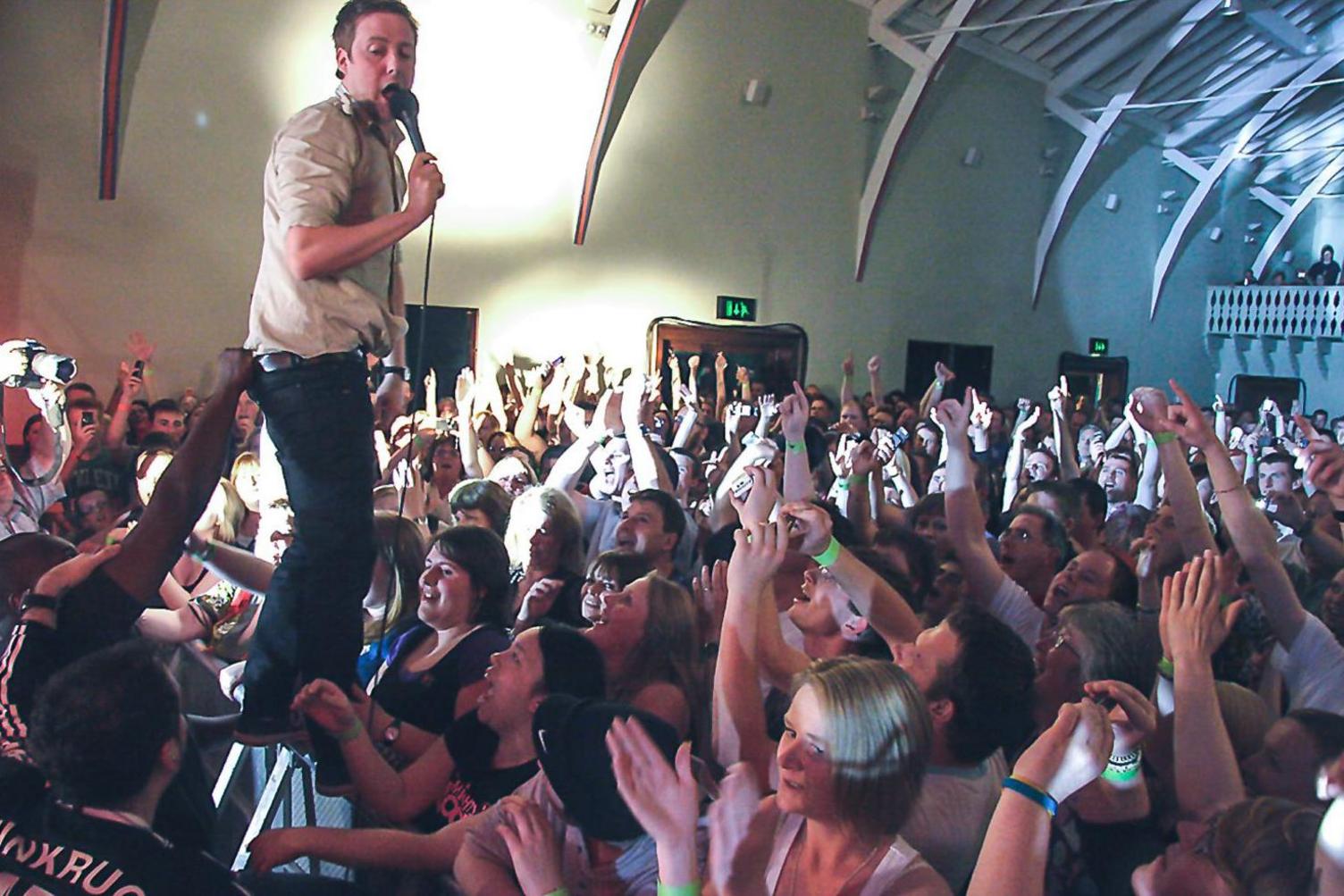What happened on a spooky Highland paranormal investigation?
- Image source, Getty Images
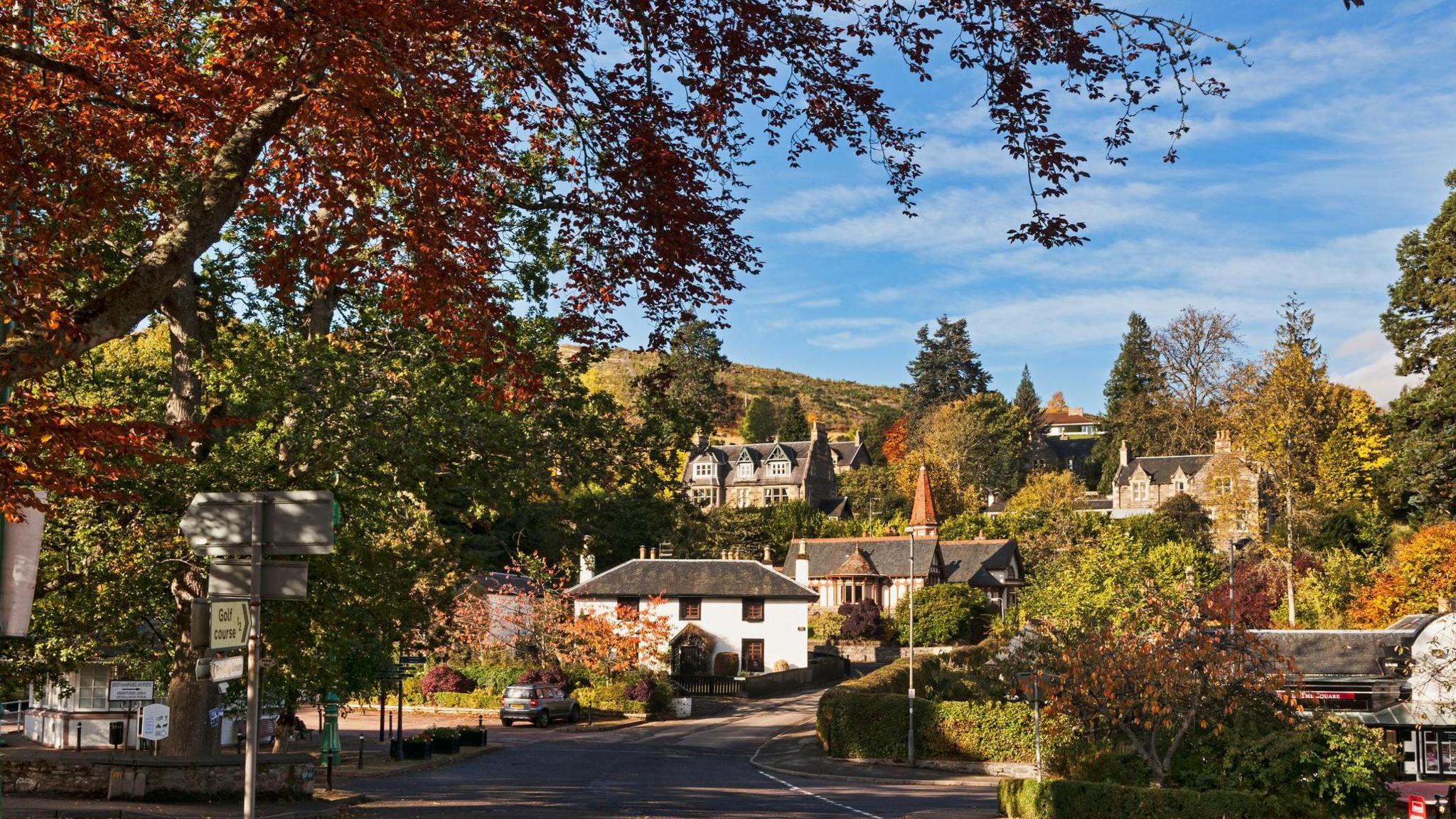
Image caption, From about 1819 to the time of World War One, Strathpeffer was a popular visitor destination. Visitors flocked to the village believing water from its sulphurous springs could heal conditions such as arthritis.
1 of 8
- Published
Set in the Victorian-era heart of the Highland village of Strathpeffer is a beautiful pavilion.
Built more than 140 years ago, its visitors have included suffragette Emmeline Pankhurst and The Beatles, after the band abandoned a gig in Dingwall.
But after recent strange goings-on, there are some who believe the place is haunted.
I joined BBC Scotland's The Social and paranormal investigators trying to unravel the mystery.
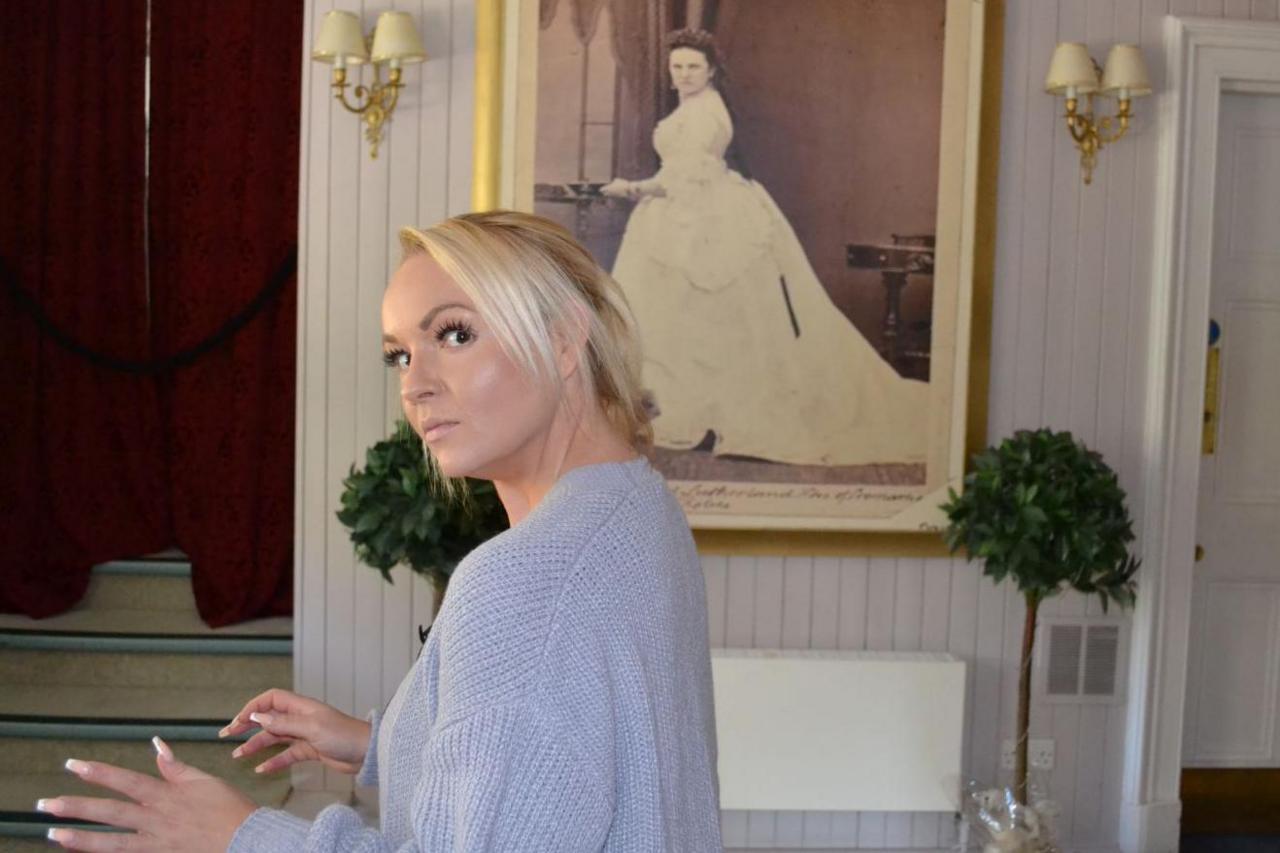
The Social's Grace Nicoll poses next to a photograph of Anne Hay-Mackenzie, the Countess of Cromartie
It's a warm autumn afternoon and we have Strathpeffer Pavilion to ourselves.
Our group includes a team from Highland Paranormal, the north of Scotland's oldest established paranormal society. It has investigated more than 180 sites across Scotland.
We're here because of seemingly unexplained events.
On occasions, when the building was closed, internal CCTV activated and filmed what looked like mist rising in the hall and lights turning on and off in the bar.
A decorator working alone also reported hearing doors slamming and then a growl in his ear.
Paranormal investigators Liam Shand, Lyn Reid and Lindsay Dunn have been searching for proof of spirits.
Liam says: "As a group our philosophy is always to look for the logical.
"If a door opens is it a draught? If we can't find that draught you then have to go down the route of did someone push that door?"
Ghost-hunting in a 'haunted' Highland theatre
- Published20 June 2024
My fright night in ‘haunted bothy' at Luibeilt Lodge
- Published24 December 2021
Near the main entrance we pass a photograph of a woman who could be our first ghost.
Anne Hay-Mackenzie, Countess of Cromartie, was a key figure in Strathpeffer's transformation from a farm to a bustling spa resort.
Wealthy Victorians travelled from as far as London believing the local sulphur and iron-rich water had healing powers, external.
The countess helped plan the village and designed its pavilion.
The aristocrat glares back from her photograph.
Maybe she was pretending to be annoyed or was in bad mood at the time the picture was taken.
It's said she had a deep dislike of her husband, the 3rd Duke of Sutherland.
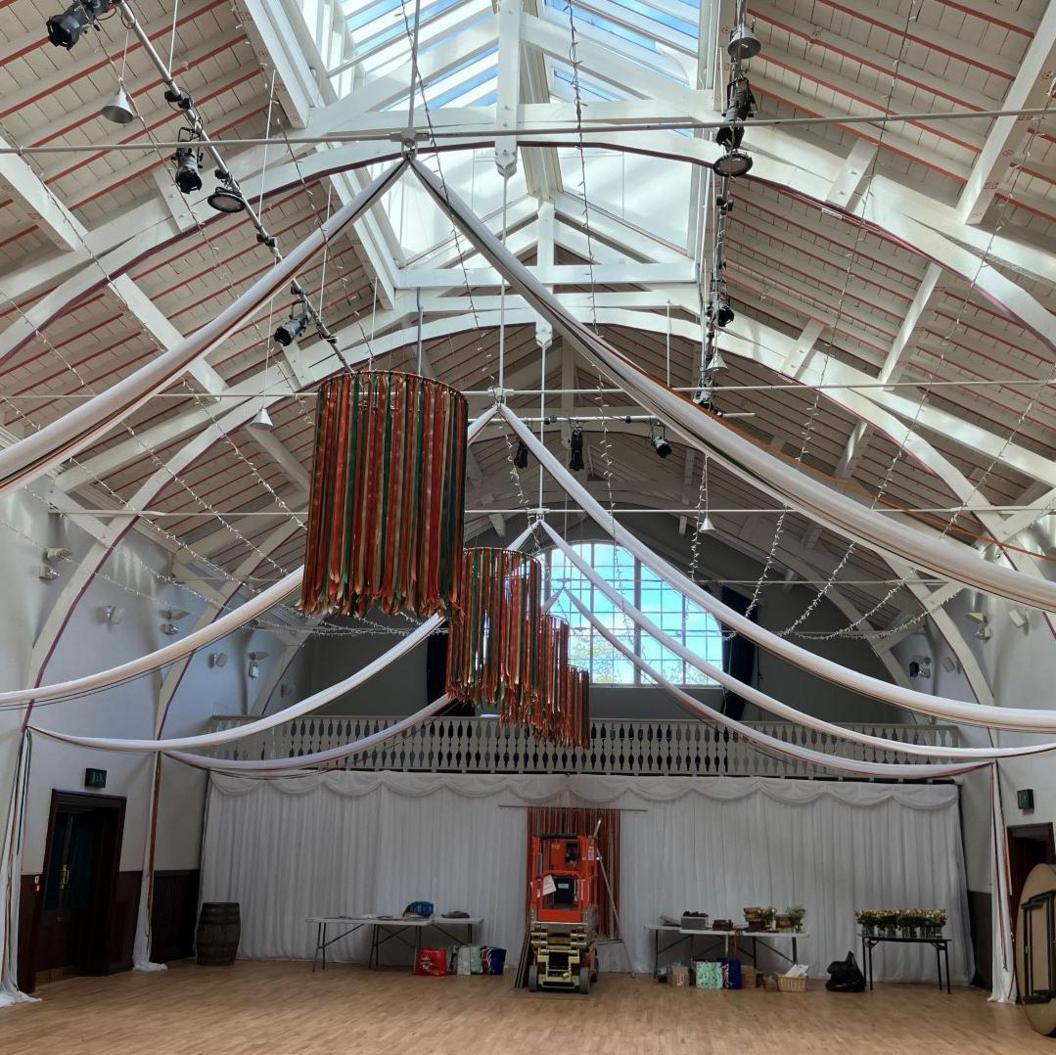
Looking towards the balcony inside the pavilion
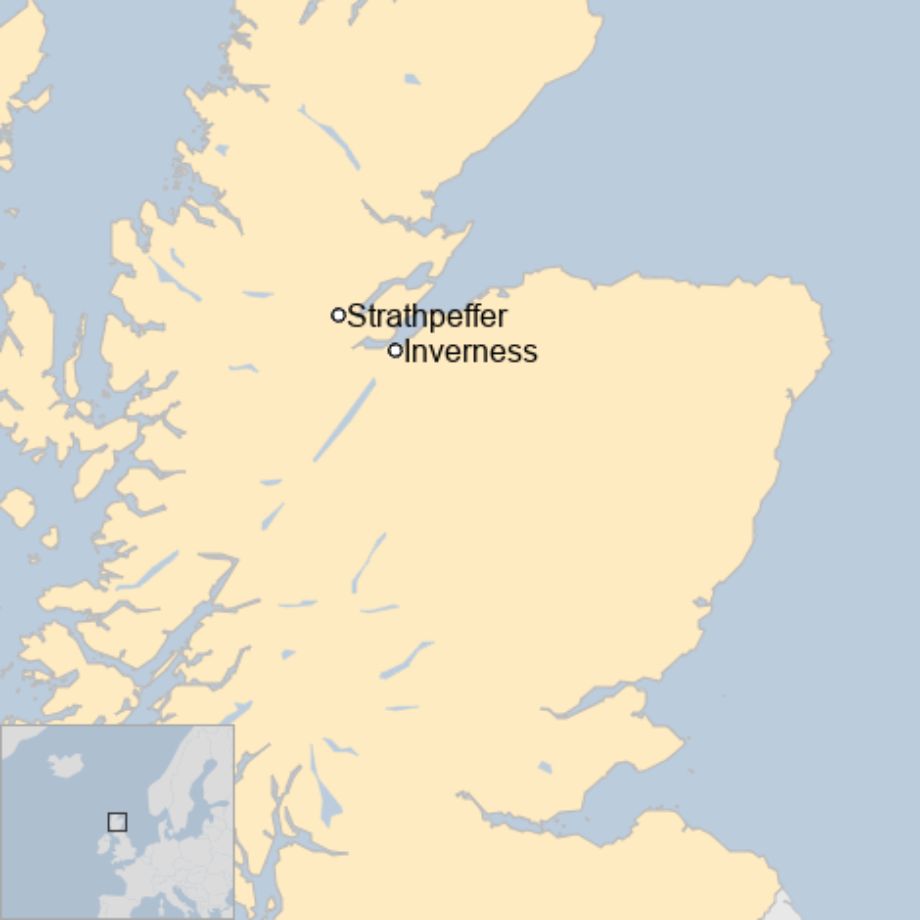
Our group heads up to a balcony overlooking the hall.
Men have reported feeling uncomfortable in this part of the building, and Highland Paranormal suspects the countess is the cause.
The investigators have equipment they say can provide clues to potential paranormal activity.
They have EMF meters to detect changes in electromagnetic fields, audio recorders and a camera.
A set of dowsing rods are handed round for us to try.
They are similar to divining rods some claim can be used to find water, and that UK water companies have used in the past to search for underground pipes.
In paranormal investigations ghosts are asked to move the rods to answer "yes" and "no" to questions.
BBC producer David Gray makes his first attempt at using the rods.
After a few questions, he asks if there is a spirit could it point to where presenter Grace Nicoll is standing.
The rods slowly swing towards Grace.
”They like you,” says David.
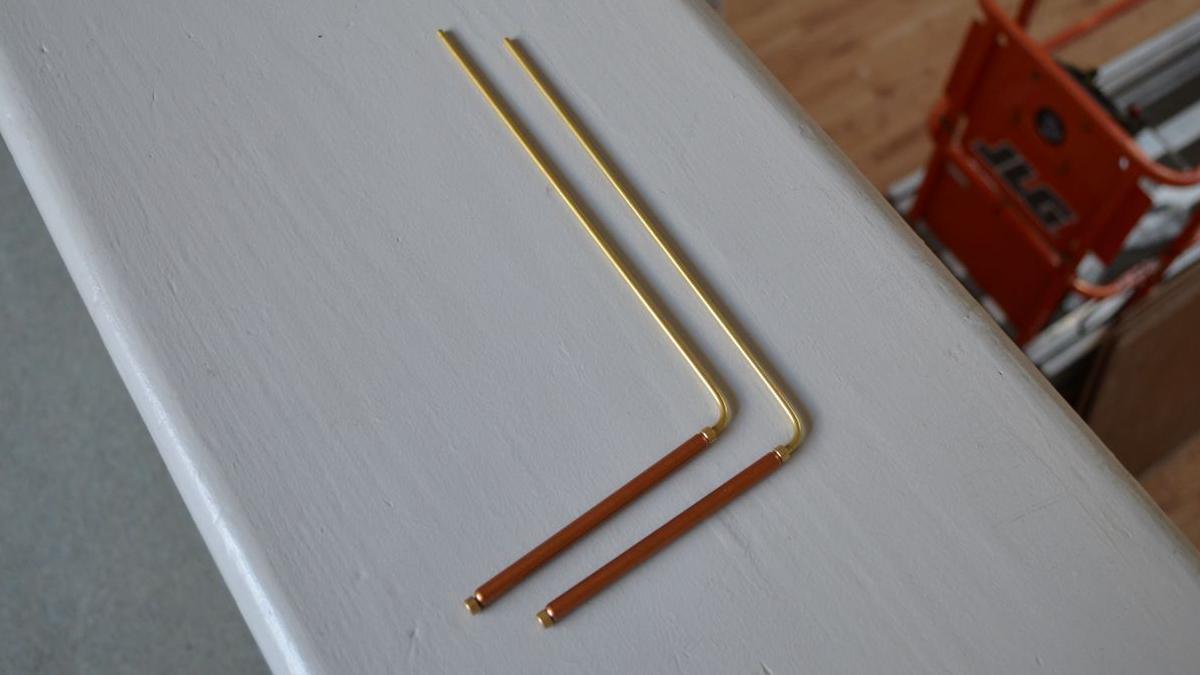
The dowsing rods used during the investigation
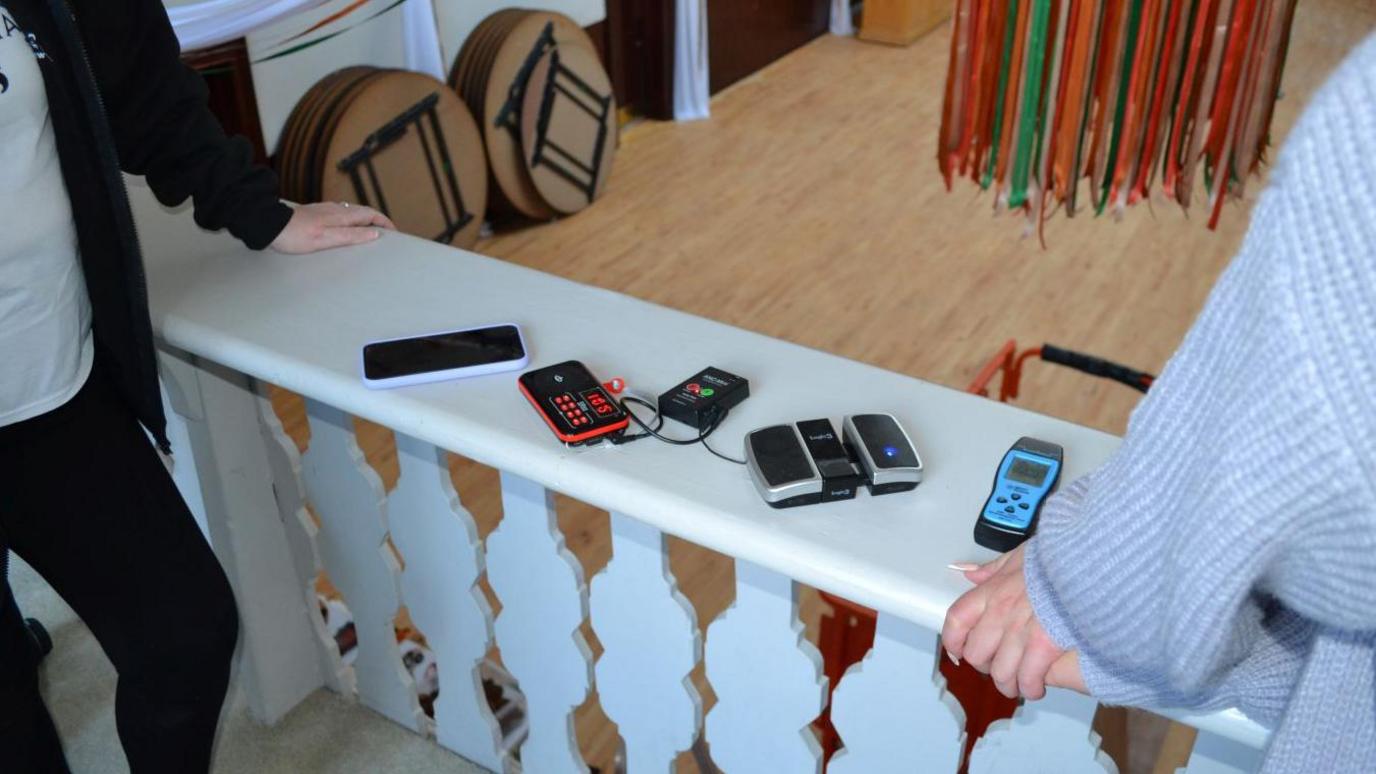
Highland Paranormal's spirit box on the balcony at Strathpeffer Pavilion
Next, a spirit box is set up.
It's an electronic system that rapidly shifts between AM frequencies as part of a process paranormal investigators claim can be manipulated by ghosts to form words.
It fizzes with white noise punctuated by short bursts of music and words.
Someone in our group asks if we should leave the balcony. The word "yes" crackles from the device.
It's decided to bid the countess, if she's there, farewell and investigate a small upstairs attic on the other side of the hall.
The team join paranormal investigators to see if they can find a ghost
Since arriving, we've been hearing soft thuds and knocks from that side of the building.
Just the sunny day causing an old building to creak and groan, or something uncanny?
We cross the hall. On its wooden floor the team has placed "triggers", clusters of objects that might be familiar to a ghost.
For this investigation they include war medals and bandages.
During World War One the pavilion was a US Navy hospital and the hall was lined with beds filled with casualties.
It's been suggested a nurse and an injured sailor are among our spooks.
Also on the floor are cat toys, little plastic balls that light up when touched.
I accidentally kick one sending it skittering across the floor, and causing a brief moment of excitement before I apologetically explain it was me and not a ghost.
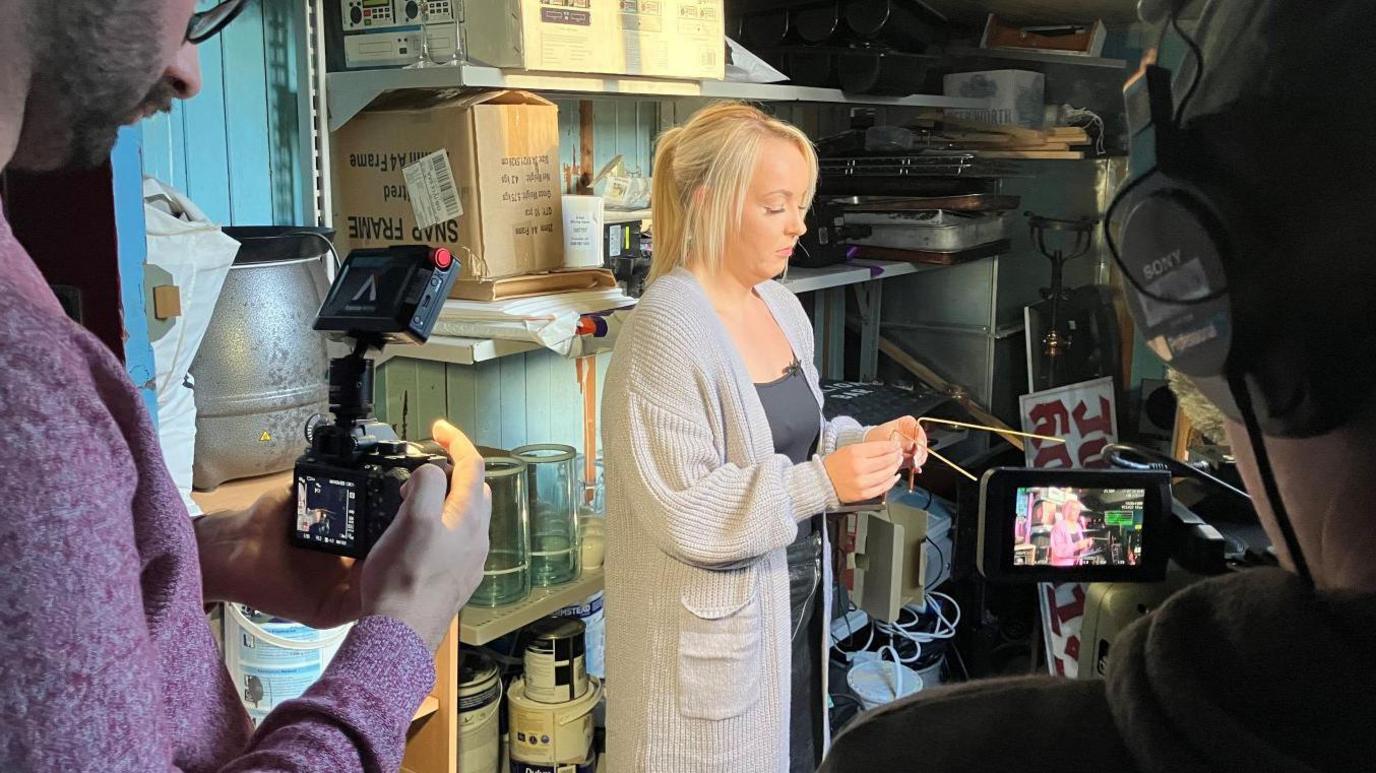
Grace tries out dowsing rods in the attic
From a darkened corridor we climb a narrow, twisting flight of stairs to the attic.
The room is small with a low roof and it's hot from the pavilion's heating.
The spirit of a young person is said to haunt the attic and Liam soon reports a spike in activity on a meter.
The dowsing rods are handed to Grace who, like David, has been trying them for the first time.
She asks if the spirit is happy to see us. The rods cross indicating "yes".
Grace asks if it can spin a rod, and it duly starts to spin rapidly.
She asks if it can spin the other rod, and it too spins round and round.
So, is the activity ghosts? Lyn and Lindsay say what we've encountered cannot be easily explained away, and believe in the possibility of at least three spirits.
'Audio illusion'
Hayley Stevens, a writer for The Skeptic, external magazine and a researcher of paranormal activity for about 20 years, suggests not.
She says involuntary muscle movements can cause dowsing rods to move.
"It's like why we close our eyes when we sneeze - things we don't do on purpose but our body does to respond to a situation," she says.
"I have this golden rule of ghost-hunting - if you have to touch something to allow the spirit to move it then it's you that's moving it."
Hayley says spirit boxes might pick up frequencies used by radio stations or taxi offices, creating an "audio illusion".
"Humans are very good pattern-seekers and find meaning in the random," she says.
Hayley adds: "The power of expectation is always going to have a role here, and the power of suggestion.
"If you are told a lady haunts a location the chances are you are going to interpret sounds as being associated with that ghost."
Both sceptic and believer could probably walk away from Starthpeffer satisfied.
While we were packing up to leave there was a thud above us.
The sound came from a vent where the attic is.
An old building settling in the cool of the late afternoon, or a cheeky ghost saying "cheerio"?
Related topics
- Published16 March 2024
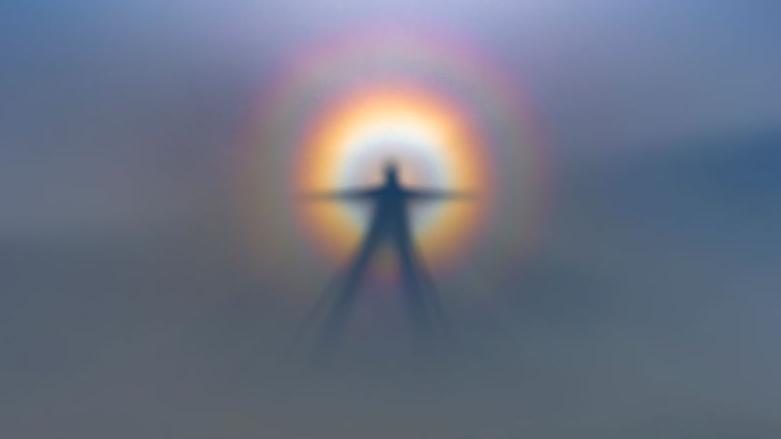
- Published27 October 2016
